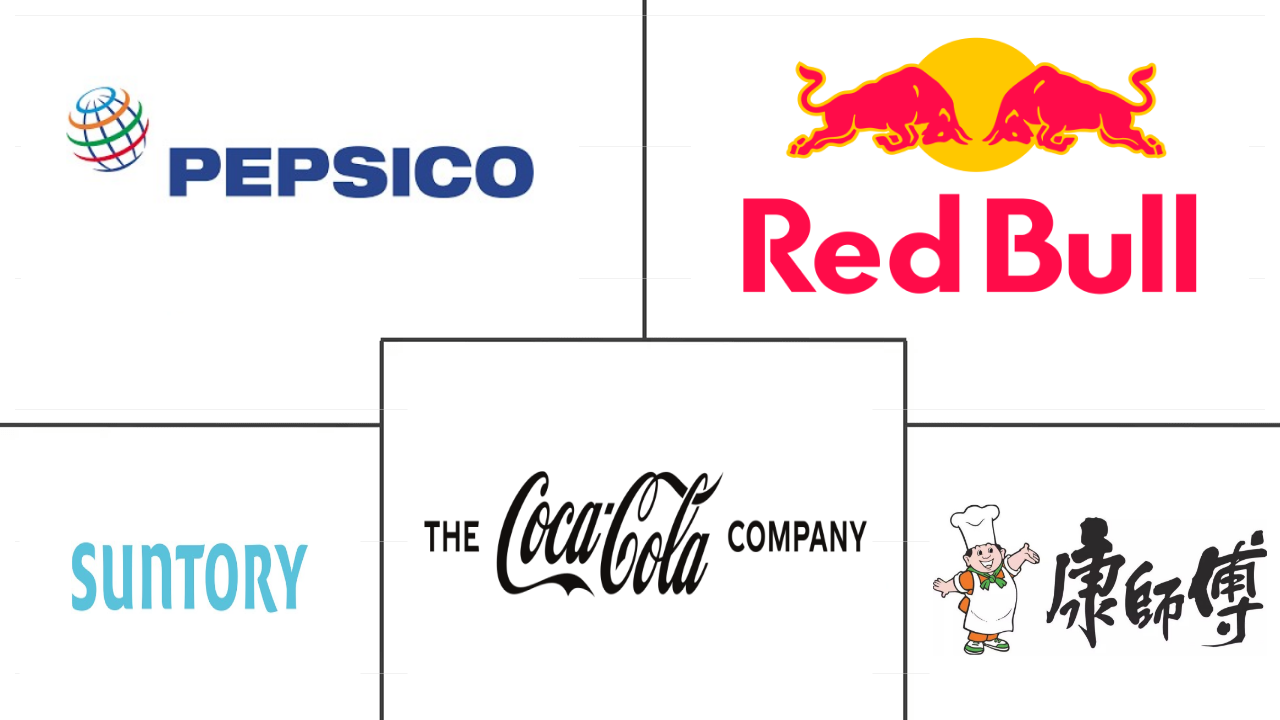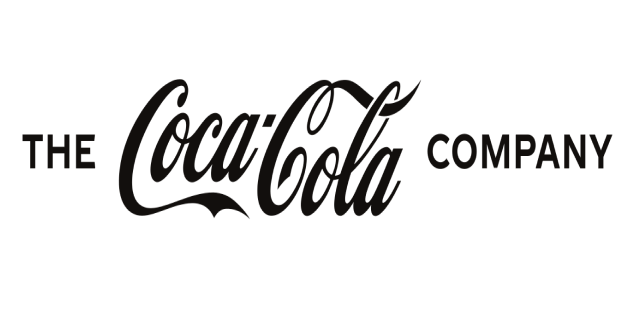Market Size of soft drinks Industry
|
|
Study Period | 2018 - 2030 |
|
|
Market Size (2024) | USD 676.1 Billion |
|
|
Market Size (2030) | USD 901.7 Billion |
|
|
Largest Share by Soft Drink Category | Carbonated Soft Drinks |
|
|
CAGR (2024 - 2030) | 4.92 % |
|
|
Largest Share by Region | North America |
Major Players |
||

|
||
|
*Disclaimer: Major Players sorted in no particular order |
Soft Drinks Market Analysis
The Soft Drinks Market size is estimated at 676.1 billion USD in 2024, and is expected to reach 901.7 billion USD by 2030, growing at a CAGR of 4.92% during the forecast period (2024-2030).
676.1 Billion
Market Size in 2024 (USD)
901.7 Billion
Market Size in 2030 (USD)
3.64 %
CAGR (2018-2023)
4.92 %
CAGR (2024-2030)
Largest Segment by Soft Drink Type
20.79 %
value share, Standard Cola, 2023
Factor that carbonated beverages are being considered as an instant quench solution along with numerous options available in the market makes it the largest segment.
Largest Region
32.51 %
value share, North America, 2023
Large consumer base, rising affluence of population and the comparatively hotter climate in the region are the major factors attributing to the large market size.
Fastest-growing segment by Soft Drink Type
8.26 %
Projected CAGR, Herbal Tea, 2024-2030
The market is booming owing to the functionality, nutritional benefits, and flavor profiles that come with different types of teas that appeal to a broad range of consumers.
Fastest-growing region
8.35 %
Projected CAGR, Africa, 2024-2030
Improving economical conditions in the major countries of the region and growing demand for beverages at home are the primary factors boosting the market growth.
Leading Market Player
6.22 %
market share, The Coca-Cola Company, 2022

The Coca-Cola Company remain pioneers in the market owing to its wide geographical footprint along with the hereditary and customer trust maintained by timely stratergic moves.
The growing demand for healthier, functional drinks across the regions is propelling the soft drink growth
- In 2023, the global market was dominated by carbonated soft drinks. The rising consumer preference for clean-label, gluten-free, low-calorie, and low-carb options fueled the growth of the low-calorie carbonated beverages segment in the food industry. Key players like Coca-Cola and Pepsi are actively innovating, introducing a range of flavors in their zero-calorie offerings to attract a wider consumer base. Some countries are employing fiscal measures, such as higher taxes, to curb sugary drink consumption. Consequently, the carbonated soft drinks market witnessed a robust 14.6% growth in value from 2019 to 2023.
- The juice segment holds a significant position as the second-largest category in the market. Global consumer preferences for juices are being shaped by health and wellness trends, product launches, and enhanced packaging. In the US, 40% of juice and smoothie consumers increased their juice intake in 2023, primarily driven by a desire to boost their vitamin intake. In 2022, around half of Chinese consumers prioritized a healthy lifestyle, with 32% specifically purchasing health-focused products, including nutritious juices.
- RTD (ready-to-drink) coffee is emerging as the fastest-growing soft drink category, with a projected value CAGR of 10.72% during 2024-2030. The formulation of RTD coffee, especially its appeal to health-conscious consumers, is pivotal. Manufacturers are responding by introducing low-calorie and sugar-free variants, allowing consumers to savor the rich coffee flavor without worrying about excess calories. This strategic move is expected to bolster sales and drive market growth in the coming years.
Availability of soft drinks in a wide range and continuous innovations are driving demand
- From 2021 to 2023, the global sales value of soft drinks surged by 8.38%. The carbonated beverage market is poised for long-term growth, driven by robust product advertising, a preference for convenient on-the-go food options, and increasingly busy lifestyles. Today's health-conscious consumers prioritize both nutrition and taste in their beverage choices. Notably, major industry players are actively transitioning to biodegradable packaging materials, reflecting their commitment to environmental sustainability.
- Asia-Pacific, a developing region, is projected to witness a significant sales value growth of 19.88% from 2023 to 2026. Key players are continuously innovating, introducing new flavors in their zero-calorie offerings to entice a broader consumer base. There is a rising consumer demand for low-sugar and low-calorie options, prompting some countries to implement fiscal measures, such as higher taxes, to curb sugary drink consumption effectively.
- During 2024-2030, the African soft drink market is set to emerge as the fastest-growing region, with a projected CAGR of 8.35%. Factors such as increasing disposable incomes, rapid urbanization, expanding financial sectors, and significant product launches in countries like Nigeria and Kenya are expected to drive industry growth. In 2020, beverage consumption in the Middle East stood at 3,733 million liters of dairy, 2,646 million liters of juice, nectars, and still drinks, 6,909 million liters of coffee and tea, 11,310 million liters of packaged water, and 2,981 million liters of carbonated soft drinks, totaling 27,857 million liters. This substantial consumption volume is on the rise, presenting ample opportunities for market entry and product innovation in the beverage sector.
Soft Drinks Industry Segmentation
Carbonated Soft Drinks, Energy Drinks, Juices, RTD Coffee, RTD Tea, Sport Drinks are covered as segments by Soft Drink Category. Aseptic packages, Disposable Cups, Glass Bottles, Metal Can, PET Bottles are covered as segments by Packaging Type. Off-trade, On-trade are covered as segments by Distribution Channel. Africa, Asia-Pacific, Europe, Middle East, North America, South America are covered as segments by Region.
- In 2023, the global market was dominated by carbonated soft drinks. The rising consumer preference for clean-label, gluten-free, low-calorie, and low-carb options fueled the growth of the low-calorie carbonated beverages segment in the food industry. Key players like Coca-Cola and Pepsi are actively innovating, introducing a range of flavors in their zero-calorie offerings to attract a wider consumer base. Some countries are employing fiscal measures, such as higher taxes, to curb sugary drink consumption. Consequently, the carbonated soft drinks market witnessed a robust 14.6% growth in value from 2019 to 2023.
- The juice segment holds a significant position as the second-largest category in the market. Global consumer preferences for juices are being shaped by health and wellness trends, product launches, and enhanced packaging. In the US, 40% of juice and smoothie consumers increased their juice intake in 2023, primarily driven by a desire to boost their vitamin intake. In 2022, around half of Chinese consumers prioritized a healthy lifestyle, with 32% specifically purchasing health-focused products, including nutritious juices.
- RTD (ready-to-drink) coffee is emerging as the fastest-growing soft drink category, with a projected value CAGR of 10.72% during 2024-2030. The formulation of RTD coffee, especially its appeal to health-conscious consumers, is pivotal. Manufacturers are responding by introducing low-calorie and sugar-free variants, allowing consumers to savor the rich coffee flavor without worrying about excess calories. This strategic move is expected to bolster sales and drive market growth in the coming years.
| Soft Drink Category | |||||||||
| |||||||||
| |||||||||
| |||||||||
| |||||||||
| |||||||||
|
| Packaging Type | |
| Aseptic packages | |
| Disposable Cups | |
| Glass Bottles | |
| Metal Can | |
| PET Bottles |
| Distribution Channel | |||||||
| |||||||
| On-trade |
| Region | ||||||||||||
| ||||||||||||
| ||||||||||||
| ||||||||||||
| ||||||||||||
| ||||||||||||
|
Soft Drinks Market Size Summary
The soft drinks market is experiencing a dynamic evolution, driven by shifting consumer preferences and innovative product offerings. Carbonated soft drinks currently dominate the market, with a notable shift towards low-calorie and zero-sugar options, as consumers increasingly seek healthier alternatives. Key industry players like Coca-Cola and PepsiCo are at the forefront of this trend, introducing a variety of flavors to cater to health-conscious consumers. The juice segment remains a significant category, influenced by global health and wellness trends, with consumers in regions like the US and China prioritizing nutritious options. Additionally, ready-to-drink (RTD) coffee is emerging as the fastest-growing category, appealing to those seeking convenient and health-oriented beverage choices. The market's growth is further supported by strategic innovations and product launches, as well as a focus on environmental sustainability through biodegradable packaging.
Regionally, the soft drinks market is poised for substantial growth, particularly in Asia-Pacific and Africa. The Asia-Pacific region is expected to see significant sales value growth, driven by increasing demand for low-sugar and low-calorie options. Meanwhile, Africa is projected to be the fastest-growing region, with factors such as rising disposable incomes and urbanization contributing to market expansion. The Middle East also presents opportunities for market entry and product innovation, with substantial beverage consumption volumes on the rise. The market remains fragmented, with major players like PepsiCo, Red Bull, Suntory Holdings, The Coca-Cola Company, and Tingyi Holding Corporation holding a significant share. These companies continue to innovate and expand their product lines, as evidenced by recent partnerships and new product launches in various regions.
Soft Drinks Market Size - Table of Contents
-
1. MARKET SEGMENTATION (includes market size in Value in USD and Volume, Forecasts up to 2030 and analysis of growth prospects)
-
1.1 Soft Drink Category
-
1.1.1 Carbonated Soft Drinks
-
1.1.1.1 By Soft Drink Type
-
1.1.1.1.1 Diet Cola
-
1.1.1.1.2 Fruit Flavored Carbonates
-
1.1.1.1.3 Standard Cola
-
1.1.1.1.4 Other Types
-
-
-
1.1.2 Energy Drinks
-
1.1.2.1 By Soft Drink Type
-
1.1.2.1.1 Energy Shots
-
1.1.2.1.2 Natural/Organic Energy Drinks
-
1.1.2.1.3 Sugar-free or Low-calories Energy Drinks
-
1.1.2.1.4 Traditional Energy Drinks
-
1.1.2.1.5 Other Energy Drinks
-
-
-
1.1.3 Juices
-
1.1.3.1 By Soft Drink Type
-
1.1.3.1.1 100% Juice
-
1.1.3.1.2 Juice Drinks (up to 24% Juice)
-
1.1.3.1.3 Juice concentrates
-
1.1.3.1.4 Nectars (25-99% Juice)
-
-
-
1.1.4 RTD Coffee
-
1.1.4.1 By Soft Drink Type
-
1.1.4.1.1 Cold Brew Coffee
-
1.1.4.1.2 Iced coffee
-
1.1.4.1.3 Other RTD Coffee
-
-
-
1.1.5 RTD Tea
-
1.1.5.1 By Soft Drink Type
-
1.1.5.1.1 Green Tea
-
1.1.5.1.2 Herbal Tea
-
1.1.5.1.3 Iced Tea
-
1.1.5.1.4 Other RTD Tea
-
-
-
1.1.6 Sport Drinks
-
1.1.6.1 By Soft Drink Type
-
1.1.6.1.1 Electrolyte-Enhanced Water
-
1.1.6.1.2 Hypertonic
-
1.1.6.1.3 Hypotonic
-
1.1.6.1.4 Isotonic
-
1.1.6.1.5 Protein-based Sport Drinks
-
-
-
-
1.2 Packaging Type
-
1.2.1 Aseptic packages
-
1.2.2 Disposable Cups
-
1.2.3 Glass Bottles
-
1.2.4 Metal Can
-
1.2.5 PET Bottles
-
-
1.3 Distribution Channel
-
1.3.1 Off-trade
-
1.3.1.1 Convenience Stores
-
1.3.1.2 Online Retail
-
1.3.1.3 Specialty Stores
-
1.3.1.4 Supermarket/Hypermarket
-
1.3.1.5 Others
-
-
1.3.2 On-trade
-
-
1.4 Region
-
1.4.1 Africa
-
1.4.1.1 Egypt
-
1.4.1.2 Nigeria
-
1.4.1.3 South Africa
-
1.4.1.4 Rest of Africa
-
-
1.4.2 Asia-Pacific
-
1.4.2.1 Australia
-
1.4.2.2 China
-
1.4.2.3 India
-
1.4.2.4 Indonesia
-
1.4.2.5 Japan
-
1.4.2.6 Malaysia
-
1.4.2.7 South Korea
-
1.4.2.8 Thailand
-
1.4.2.9 Vietnam
-
1.4.2.10 Rest of Asia-Pacific
-
-
1.4.3 Europe
-
1.4.3.1 Belgium
-
1.4.3.2 France
-
1.4.3.3 Germany
-
1.4.3.4 Italy
-
1.4.3.5 Netherlands
-
1.4.3.6 Russia
-
1.4.3.7 Spain
-
1.4.3.8 Turkey
-
1.4.3.9 United Kingdom
-
1.4.3.10 Rest of Europe
-
-
1.4.4 Middle East
-
1.4.4.1 Qatar
-
1.4.4.2 Saudi Arabia
-
1.4.4.3 United Arab Emirates
-
1.4.4.4 Rest of Middle East
-
-
1.4.5 North America
-
1.4.5.1 Canada
-
1.4.5.2 Mexico
-
1.4.5.3 United States
-
1.4.5.4 Rest of North America
-
-
1.4.6 South America
-
1.4.6.1 Argentina
-
1.4.6.2 Brazil
-
1.4.6.3 Rest of South America
-
-
-
Soft Drinks Market Size FAQs
How big is the Global Soft Drinks Market?
The Global Soft Drinks Market size is expected to reach USD 676.11 billion in 2024 and grow at a CAGR of 4.92% to reach USD 901.73 billion by 2030.
What is the current Global Soft Drinks Market size?
In 2024, the Global Soft Drinks Market size is expected to reach USD 676.11 billion.

